7 Ways To Write a Great Headline
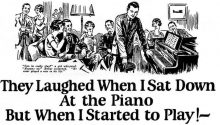
When you write great headlines, you improve the results of every advertisement, flyer, invitation, press release, client letter, and email you write. Remember that 73% of the buying decision is made at the point of the headline. And “buying” can mean opening the email message, listening to the rest of the TV or radio ad, reading the rest of the newspaper advertisement, buying the product or registering for a community seminar. So let’s spend some time looking at proven ways to create great headlines.
Ted Nicholas has written books selling over a million copies including How To Form Your Own Corporation For Under $75 . Ted recommends writing the headline first before writing any other part of the ad. He starts out by listing every possible benefit he can think of. Next he turns benefits into headlines and writes as many as he can think of. Sometimes as many as 200 for one product! Once you’ve settled on the main headline you can start putting together the rest of the ad. You can use the “runner up headlines” as “sub-headlines” to highlight other advantages of the product or service.
Remember that your headline must speak to a want, need or desire of your prospective customer. This is the big benefit that your product or service offers.
Now let’s look at 7 ways to write a great headline.
- Add the words “How To” to your existing headline. Tests using the exact same ad with only these 2 words added to the headline increased results by 17%. I did this with a headline for living trust seminars beginning with “Avoid Probate…” and made it “How To Avoid Probate…” and improved results. People are looking for solutions to problems and they want to know “how-to” do something.
- You can offer to fill a gap in the marketplace with the words “Finally,…” or “At Last, You Can…” These headlines build curiosity because you may solve a problem they’ve had for a long time. “At Last, You Can Stop Worrying About Your Retirement”
- Everyone hears “No” from parents, teachers, bosses, so hearing “Yes” gets them to stop in their tracks. “Yes, You Can …”
- Using a client testimonial can create a great headline by adding credibility and personalizing the product or service. Here’s a classic “testimonial” type ad written by copywriting ledgend John Caples: They Laughed When I Sat Down At the Piano But When I Started to Play! —
- Ask a question: “Tired of Waiting For the Phone To Ring?” or “Worried About Running Out of Retirement Money?”
- Two words, “Free” and “New”, are proven to grab attention: “Free Report On Avoiding the 5 Most Common Mistakes of Retirement Planning” and “7 New Ways To Hire Better Employees” Both of these headlines have a number in them. For some reason odd numbers of lists work better. The exception to this rule is “Top 10” lists which work well.
- Try to dig deeper and uncover the “hidden benefit” of your product, seminar, or service. Ted Nicholas used “The Ultimate Tax Shelter” as the headline for selling 200,000 copies of his book on setting up your own corporation. Yes, this single ad generated over $4 million in book sales. Yet the book itself didn’t use the phrase “tax shelter.” He says that the “tax shelter possibilities are why many people form corporations.”
When you see the same exact ad running again and again in your local paper or in a magazine, you know it must be working. And a great headline is the number one reason an ad will work again and again. Folks see the ad, read the headline and then the rest of the ad and finally take action.
Now take a look at your own ads and see how you can improve the headlines.
How To Write an Effective Advertisement
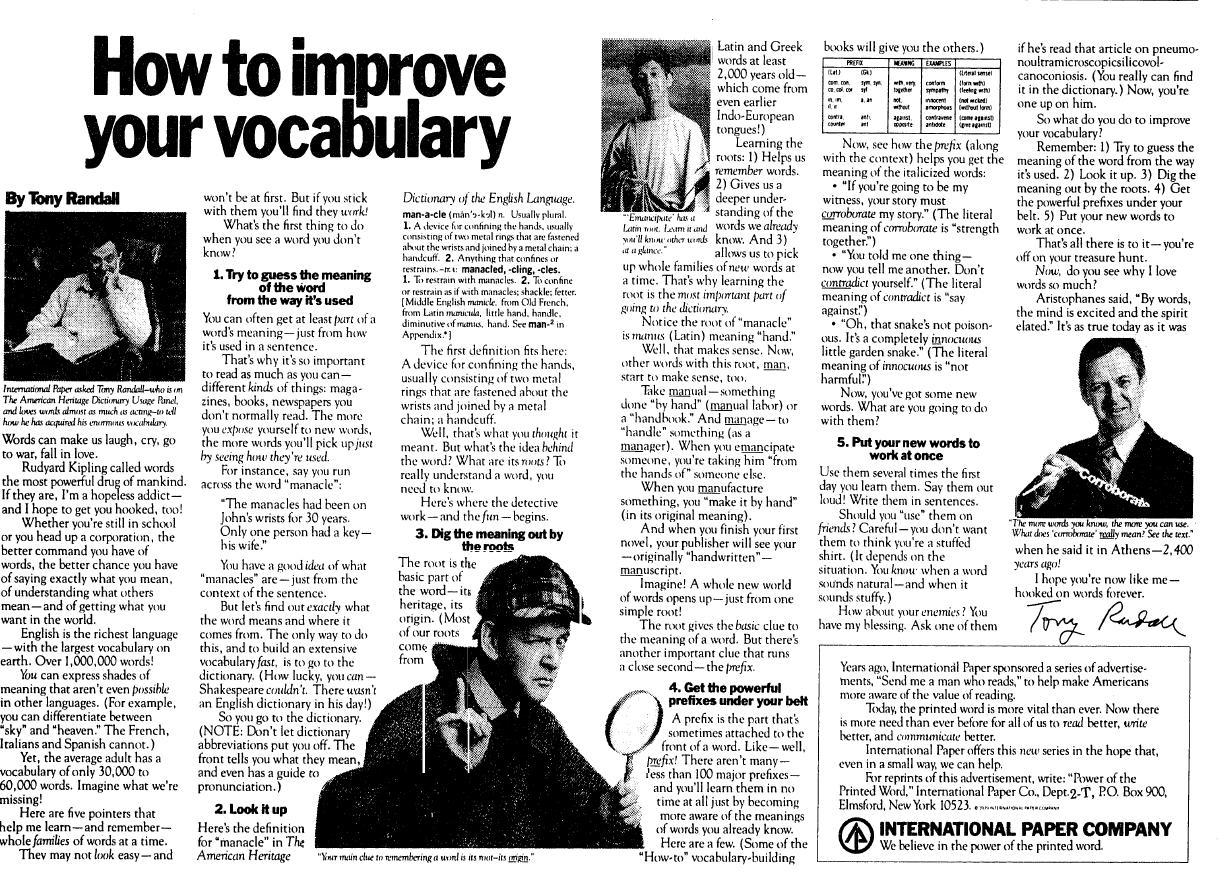
You begin the process of creating an effective ad by thinking of one of your best clients, a wealthy widow by the name of Sally Jones. You write the ad for Sally so your ad will speak to Sally and people like her.
You absolutely do not want to design the ad to please yourself. As author Jerry Reitman wrote, “Bait the hook to suit the fish, not the fisherman.” One of you is enough! You want more Sally’s so your ad should speak to Sally and get people like Sally to take action.
Over the years, successful writers have developed copywriting formulas which produce effective ads, TV commercials, and sales letters. I first learned about the “AIDA” formula in 1989 from marketing expert, Jay Abraham.
AIDA stands for attention, interest, desire and action. Your ad must get the buyers’ attention, build interest in your product or service, create desire to own that product or service, and finally ask the viewer or reader to take action to get that product or service.
Attention
You get your reader’s attention with a powerful headline. This is the key.
Ted Nicholas became famous selling his best selling book, How To Form Your Own Corporation Without An Attorney For Under $50. He spent hundreds of millions of dollars promoting this and other books in full-page magazine ads. He says that “73% of the buying decision is made at the point of the headline.”
Without a powerful and persuasive headline, your ad copy won’t be read. Your offer won’t be considered. You’ll waste your money.
So what should a good headline do? In Bob Bly’s The Copywriter’s Handbook, he describes the four functions of a headline:
- Get attention. This gets the reader to read more of the ad.
- Select the audience. Who do you want to attract? Who would you rather not attract?
- Deliver a complete message. David Ogilvy, author of Confessions of an Advertising Man, says that 80% of readers will only read the headline. Headlines like “Merrill Lynch Is Bullish On America” at least let the reader know the name of the company.
- Draw the reader into the body copy. The promise of solutions to current or potential problems gets the reader to continue reading more of the ad.
Let’s consider these four functions as we look at a few headlines.
“How To Win Friends and Influence People”
Dale Carnegie wrote this best-selling book during the 1930‘s. The book’s title served as the headline for ads selling the book. This headline grabs the reader’s attention and builds curiosity because who doesn’t want more friends? So this headline/title does #1 and #4. In a way, it selects the audience (#2) because everyone wants more friends.
“Did Your 401(k) Become a 201(k)?”
This headline grabbed attention (#1) by dramatizing a 50% fall in the stock market. It selected the audience (#2) by assuming the reader had a 401(k). It pulls the reader into the copy (#4) because it implies a solution to the problem of a falling retirement portfolio. While powerful, it missed on #2 by not offering a solution to the problem. I suppose “Turn Your 201(k) Into a 301(k) With Chinese Growth Stocks” would fulfill #3 but only testing would show if it was as effective.
“Worried About Outliving Your Retirement Funds?”
This headline grabs attention (#1) by pointing the pain of running out of money during retirement. It selects the audience (#2) advisors want to reach because pre-retirees and retirees worry about this; 25 year-olds don’t give it a thought. It can’t deliver a complete message because the problem will differ greatly from person to person. Yet it raises a real concern during times of rising prices and low interest rates and draws the reader into the rest of the ad (#4).
The most common mistake in advertising is using your business name at the top of the ad as the headline. Look at all the ads in the yellow pages or your local paper. How many put the company name the top in big letters? Most. Use a powerful and compelling headline and you’ll have far more effective ads. Why? Because your prospects will read on….
Interest
Next, you need to build interest in the reader for your service or product. Keep the reader interested by providing more facts which show in words or imagery you can deliver on the promise made in the headline. Pile on multiple benefits that will improve their lives.
Validate your claims by offering proof you can deliver on your promises. This proof can include references to your education, certifications, and years in business. Perhaps you’re a radio show host or have written articles in your local paper or other major publications.
Include some client testimonials and let your customers praise you in print. In local markets, this provides powerful proof that you will deliver what you’re promising.
Desire
You build up desire by helping them imagine how they’ll feel after buying your product or service. Your product will make their life better and more enjoyable. Whether it’s a night on the town or a better retirement. you want your prospect to want what you have to offer.
You should offer the best guarantee you can. You can also build desire by offering additional free bonuse or limited time offers.
And how do they fulfill their desires? By accepting your offer….
Action
Finally, you need to close the deal and get the reader to act now and accept your offer. You want them to take an action step to get them to your website or place of business.
Your offer will differ depending on the ad placement. Yellow pages ads run all year long so the offer might be for a free report on “The 7 Most Common Mistakes and How To Avoid Them.” An advertisement for a no obligation tax planning analysis would work during tax season. Yet an ad for a free community seminar will only work a week prior to the event.
In a previous article, I wrote about giving away free information. Just remember that you need to offer your prospect something of value so they’ll contact you.
Your offer ends with a call to action. “Call our office today to receive your free report.” Or “Visit our website to get all the details and find out how they can get a free sample..”
At the bottom of your ad you can include your company name, address and contact information. Make it easy to read so they can take action and get a hold of you.
In my next article I’ll look show you some more ways to create effective headlines.
How To Get More Bang For Your Advertising Buck
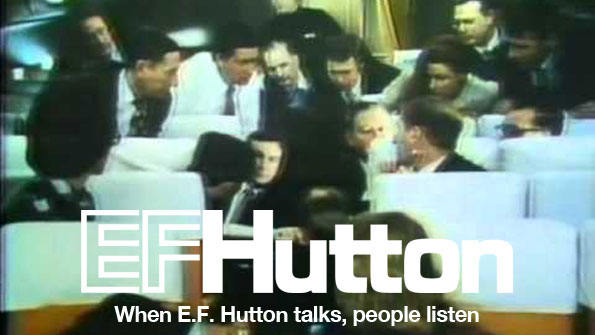
“Half my advertising is wasted, but I don’t know which half.” ~ John Wanamaker, 19th century retailer
You’ll find improving your advertising to be one of the best ways to leverage your marketing dollars. Why? Because an ad costs the same whether it brings in 1 call per day or 10 calls per day. So improve your ads and you’ll get more calls without spending an extra dime on advertising.
Let’s define the two major types of advertising: General (or image) advertising and direct response advertising.
Copywriter Bob Bly defines general or image advertising as “advertising that seeks to instill a preference for the product in the consumer’s mind to promote the future sale of the product at a retail outlet or through a distributor or agent.” Image advertising is seen every day in TV commercials for consumer products and magazines such as Forbes and Fortune for institutional advertising. Some famous image advertising campaigns included:
“Merrill Lynch is bullish on America.” This slogan was introduced during the 1971 World Series.
“When E. F. Hutton talks, people listen.” Very memorable ad…but would it make you call a broker and invest some money?
E.F. Hutton no longer exists as a business although their old ads remain alive on YouTube.com.
Many businesses place small display ads in their local newspapers to get their name out there. Similarly, I see “business card” sized ads in the local Chamber of Commerce magazine of guess what? The company owner’s business card. Normally this would fall under image advertising because it just gets your name, contact number, and perhaps areas of expertise out in the marketplace. A caller might tell you they saw your ad in the Chamber paper. Or you can ask them how they heard about you. Otherwise, you won’t really know if it’s helping or not.
Bob Bly defines direct response advertising as “advertising that seeks to get orders or leads directly and immediately rather than build an image or awareness over a period of time.” This type of advertising is the opposite of image or general advertising.
Direct response ads are easy to spot when you see a coupon at the bottom of the ad. Or you’re asked to call an 800 number to order the product. You measure the response to these ads to know how well the ad is working. You can change the headline or the offer and know if you improved or hurt the ad.
You can turn your “image ad” into a direct response ad by offering a free report. This could be a written report or an audio interview on CD. The viewer of the ad is asked to call your office to get their free report. You capture their name and address so you can mail them the report. You can also ask, “Would you like to receive helpful and interesting investment information via email?” You can mail them the report with a copy of your last physical newsletter. Most importantly, you can measure the success of the ad because you’ll know how many people call in to request the report.
Direct response advertising also allows you to measure the relative strength of different advertising mediums. For instance, you might advertise in 2 different yellow pages. You could offer different reports and track which yellow pages works better for you. Otherwise, you just have to guess. Online searches may eventually put the yellow pages out of business. Only time will tell. But if you track your own yellow page ads you’ll know when it’s time to pull the plug on yellow pages.
Glitzy image advertising might win a design award. And get posted on YouTube.com. But you want to win new clients. So use direct response advertising to get prospects to call your office now and get them in your marketing pipeline. Measure your results so you can test different ads. Keep your winning ads and cull the losers.
How To Put Your USP To Work
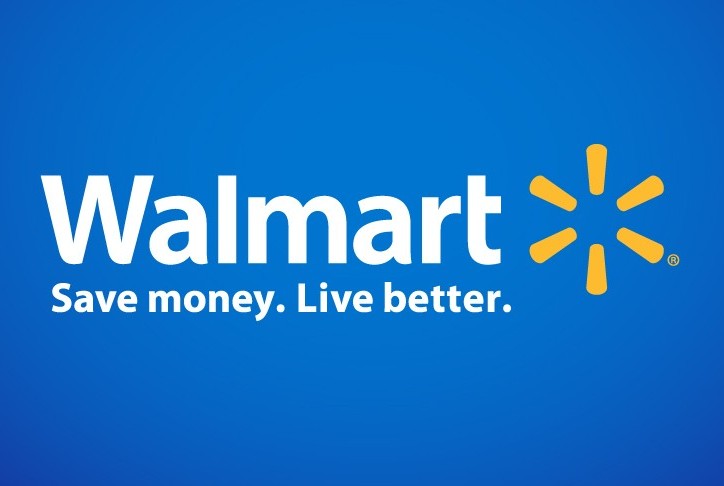
In a recent post we spoke about creating a USP or “unique selling proposition.” Your USP answers the question of why someone should do business with you rather than with a competitor or just do it themselves. Your USP sets you apart from your competitors. Walmart’s USP reminds its customers that they are saving money and improving their quality of life by shopping at Walmart. You need to put your USP to work to grow your business. Your goal is to put your USP in all your marketing materials and in every communication piece your clients see. Let’s list some easy ways:
- Your website banner. Change your header graphic and every page of your website will be updated.
- Your website articles. Update your bio page, qualifications page, etc. to emphasize what makes you different.
- Your invoices and statements. Maybe you can put in the footer or the cover page of the statement.
- Your business proposals. You want your USP to appear near your picture.
- Your answering machine message: “Thank you for calling John Smith & Associates, where we help you make money and retire better. How may I help you?
- Your email signature block
- Your fax cover sheet
- Add it to your byline in articles you write.
- Add it to introductions when you speak in public
- Display advertisements.
- Press releases
Other places may wait until you need to reprint:
- Your business cards.
- Your practice brochures.
- Your letterhead. Consider adding your USP to the bottom of your signature block until you reprint.
- Your checks. You never know if one of your vendors needs a financial advisor.
- Your yellow page ads
- Your billboards. Unlikely I know but what about the sign on the front of your office?
- Your employee memos
The last one might seem odd at first glance but really it’s critical. Imagine if one of your employees was asked, “What makes your boss different from all the other financial advisors out there?” What would she say? Imagine, a Fed Ex employee being asked in 1978, “Why should I pay ten bucks to mail a letter?” “I don’t know” would be the wrong answer! All your employees should know what makes you different and better and be able to explain why you’re the best choice. You need to ensure that you can deliver on your promise so your employees must be trained to deliver on your USP. Proverbs 29:18 states, “Where there is no vision, the people perish.” Use your USP training to get your employees jazzed up on how you aim high and want to over deliver on your promises. 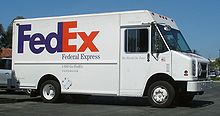
Remember that you can update your marketing materials over time. And when your business changes, you’ll need to update your USP to match. Be glad you don’t have a fleet of 30,000 trucks to repaint every time you update your USP!
Kickstart Your Marketing With a USP and Set Yourself Apart

Every business and business professional should have a “USP” which stands for “unique selling proposition.”
Without a USP your advertising will have a plain vanilla, me-to appearance which won’t lead people to take action. When you have a good USP and deploy it in your advertising, you’ll attract more clients like you want. You’ll also keep away folks who aren’t your targeted clientele.
Rosser Reeves invented the term “USP” in the 1960’s. In his book, Reality in Advertising, he defines what makes a good USP:
1. Each advertisement must make a proposition to the consumer. Not just words, not just product puffery, not just show-window advertising. Each advertisement must say to each reader: “Buy this product, and you will get this specific benefit.”
2. The proposition must be one that the competition either cannot, or does not, offer. It must be unique—either a uniqueness of the brand or a claim not otherwise made in that particular field of advertising.
3. The proposition must be so strong that it can move the mass millions, i.e., pull over new customers to your product.
Here are some well known examples which meet this 3-part definition:
Domino’s Pizza: “You get fresh, hot pizza delivered to your door in 30 minutes or less — or it’s free.” Notice it says nothing about Mama’s recipe, taste, or low price. This created a whole new market at a time when it took 30 to 40 minutes to get a pizza at pizza restaurants.
FedEx: “When your package absolutely, positively has to get there overnight” This USP answered the question, “Why would anyone want to pay ten bucks to mail a letter?”
M&M’s: “The milk chocolate melts in your mouth, not in your hand” Rosser Reeves created this USP over 40 years ago and it still works great.
Wonder Bread: “Wonder Bread Helps Build Strong Bodies 12 Ways” Maybe it does, maybe it doesn’t. It sure sold a lot of bread.
Did it occur to you that 3 of these 4 USP’s are no longer used by their companies? I had to look up Wonder Bread and found they use “Soft. Delicious. Nutritious.” Fed Ex does a lot more today than overnight delivery so they use “Save more as you ship more, Think FedEx First.” Pizza Hut’s website emphasizes that it wins national taste tests.
You also need to remember to use your USP in all your ads and in contact with customers and prospects. I noticed in the fine legal print on Domino’s home page:
Domino’s new hand tossed pizza has been reinvented from the crust up to be our best tasting pizza ever. Guaranteed. If you are not completely satisfied with your Domino’s pizza experience, we will make it right or refund your money.
This should be in BIG print in the headline of the webpage. 99% of web visitors will miss this. Guarantees are a great way to create a USP.
Your USP should be visible and become part of your daily operations…not just something for your advertisements or website. Let me give you an example.
My mom came across a letter written to me back on April 23, 1976. I had written to M&M-Mars after getting some red, green or brown coloring on my hands while eating some M&M’s. I can’t remember what motivated me to write them. Maybe it was school assignment. Maybe I was just being a wise guy. Here’s their reply:
Dear Richard:
Thank you for your letter and your interest in M&Ms Chocolate Candies.
In our advertisements we say: “THE MILK CHOCOLATE MELTS IN YOUR MOUTH – NOT IN YOUR HAND”. The melting to which you referred was undoubtedly caused when the pure food coloring in the thin sugar shell came in contact with the moisture in your hands. This sometimes happens if the candy is held for a while.
The objective of our advertising is to acquaint consumers with the fact that M&Ms Chocolate Candies are neat to eat and do not have the mess of other chocolate products that do not have thin sugar shells protecting the chocolate centers.
Thank you again for your interest in writing to us.
Very truly yours,
(Miss) Eleanor C. Trautwein
Customer Service Manager
Now let’s talk about USPs for business professionals. Your USP should answer the question, “Why should someone choose you as their advisor over all other advisors in your area and instead of doing it themselves?”
Obviously, you can answer this question in numerous ways. Let’s categorize them as good, bad and ugly.
Let start out with “ugly” USPs for business professionals.
Ugly ones will get you in trouble with your compliance department. This may affect you if you are a financial advisor, insurance agent, CPA or tax professional. For instance, Montgomery Ward first used “Satisfaction guaranteed or your money back” in 1874. Worse yet, “Retire as a millionaire…” These sound lame because compliance departments don’t like anything which is promissory in nature. FINRA won’t let advisors use client testimonials so that eliminates a lot of ideas for USPs. Your industry standards will set boundaries on what you can say.
Next, what makes a “bad” USP for a professional?
Something vague or a cliche like “Quality Service. High Standards.” Every one can say this so why bother? If your client or prospect reads something and says “So what?” or “Duh. Every advisor does that” then you know you need to work harder. I see this all the time with advisor websites which use the boilerplate verbiage provided by the website company.
What makes a good USP for a professional?
A good USP describes who you are, what makes you different and tells your story in a way that sells your prospect on your ability to get the job done for them. So an advisor’s USP should be more of a core story than a tagline like Walmart’s “Save Money. Live Better.”
You shouldn’t put too much weight on your designations. There are over 50,000 CFP’s in the United States. Many advisors argue this designation is the best one to have. Few would argue that it sets them apart like it did ten or twenty years ago. Yet, how many advisors describe why they pursued the CFP certification and how it improved their ability as a planner? Plus states are cracking down on new designations these days so you wouldn’t want to build your marketing around a designation which may be on the outs in the near future. Even if you’re the only one in town with it.
How do you get started creating your own USP/core story?
Easy, just start calling up your best clients. Ask them why they initially started doing business with you and why they continue to do business with you. Something about you attracted them to you and kept them from going elsewhere. Or may be they did go elsewhere and came back to you. What did they not like about that other financial advisor?
Next, look at your own story and how you got to where you are today. You’ll want to uncover details about your life which made you the advisor you are today.
Finally weave this information together so that your own unique story is told in a way that will attract your a-list clients. Never forget you are a unique individual and the “U” in “USP” stands for “unique.” Be yourself. Don’t be bland. Stand out from your peers.
How To Use Radio Advertising To Get Known As An Expert
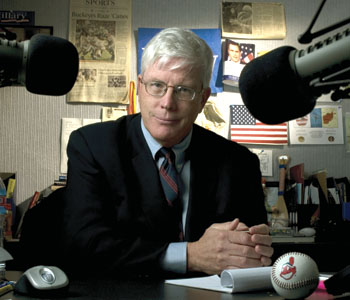
Radio advertising is a great way to get known in your community as an financial expert and promote your upcoming events.
Your ad must lead with a attention grabbing headline to get the listeners’ interest. This keeps them from changing the station or just mentally tuning out.
Beware of letting your ad rep write your ad. Their goal is to sell ads and that’s their main skill. They may or may not be able to write ads which help you. Remember that the ad costs the same regardless of how it performs. You want a “direct response” ad so you know if your ad pays for itself or not. These type of ads include a very simple way for listeners to contact you, like an easy to remember website address or super easy phone number (for example, 334-555-7777). The most effective direct response ads repeat the website address or phone number at least 3 times in the commercial to enhance recall.
The time and cost of producing a radio commercial is far below the cost of producing an equivalent length television commercial. And if an ad doesn’t work you just record another one. Most radio stations include free production as part of your advertising buy, which includes both the copywriting and voiceover assistance.
You must choose your radio station carefully. The listening audience’s demographics must match your target market. Not your taste in music. A great ad on the wrong station won’t build your practice. Look for stations that have a large number of financially qualified listeners; some radio stations can supply you with that specific research data, especially in larger metropolitan areas. You can also reasonably assume that stations that program a format that appeals to an older demographic will in general terms be more likely to utilize a financial planner, as opposed to stations that target listeners in their teens and 20’s. Formats that perform especially well with a more affluent audience of adults over the age of 45 include news, talk, oldies, jazz and classical stations.
Radio consultant and station owner Burke Allen from Allen Media Strategies recommends that you always negotiate with the station account executive. “Electronic media sales reps tend to have quite a bit of flexibility with their per spot rate and placement so don’t accept the first thing that is offered to you.”
The two main categories of radio stations are commercial and noncommercial.
Commercial Radio Stations
Commercial radio stations play all kinds of music which appeals to all ages and social classes. As I mentioned earlier, the demographics of commercial radio vary widely so choose your station wisely.
Radio spots are typically 60 seconds long which is about 250 to 300 words. 60 seconds is plenty of time to create an effective advertisement. Remember to start out strong to keep your listeners attention.
Best to use the radio station staff to record the commercial especially when you’re promoting a seminar or other event. You want to be positioned as a financial expert not a used car salesman. “CFP” does not stand for “Certified Financial Pitchman”!
You can be the star if you use an interview format. You provide valuable information so people see it as a mini-radio show rather than a commercial. They pay attention and don’t change the channel. Here’s a simplified version of a commercial using this format:
- The announcer begins with an introduction of you and your firm. “Time for today’s Money Minute with certified financial planning professional Bob Johnson.” This acts as the headline of the ad.
- The announcer asks you a quick question, “Today’s question is ‘Does a will help me if my husband gets Alzheimer’s?’”
- You provide a clear and concise answer: “No. Wills only go into effect upon death not disability. If your husband was mentally disabled, you would need to go to court to set up a guardianship. This is costly, time-consuming, and embarrassing. Many couples avoid this problem with a living trust.”
- The announcer closes the ad with a call to action, “For a free report on estate planning essentials, call Bob Johnson of Johnson Wealth Management at 555-666-7777.” The announcer should include your USP if time permits. Remember to have them repeat your contact information at least three times to enhance recall.
Noncommercial Radio Stations
Public radio stations tend to program either a News/Talk format or classical/jazz/world music. These formats appeal to older and more affluent audiences. You won’t advertise, of course, you’ll be a “supporter”of noncommercial radio. In recent years, public radio stations have expanded what supporters can say about their businesses. For example:
“Bob Johnson and Johnson Wealth Management support the arts community and Jefferson Public Radio. With systematic planning and proven strategies, Bob Johnson helps families prepare for all stages of life from college savings accounts, to funding a busy and vital retirement, to handling long-term care needs. You can reach Bob in his Medford office at 555-666-7777.”
Listen to your local public radio station and get a feel of what they allow. Don’t be afraid to push the envelope. Somebody has in the past and you might as well push it a bit further. Perhaps they’ll allow a community announcement like this:
“Bob Johnson and Johnson Wealth Management support the arts community and Jefferson Public Radio. On Tuesday, July 5th, Bob Johnson will be holding a community seminar to help individuals and couple learn how to avoid probate and minimize estate taxes. For more details and an invitation, call Bob Johnson in his Medford office at 555-666-7777.”
These underwriter announcements are short and to the point, and are helpful not “salesy”. They work best if recorded by a well-known and well-liked station announcer, but are often read live at public stations.
When should your ads run? Morning and afternoon drive times are the most listened to time on radio, as about 70% of radio listening happens in-car. I helped one advisor who had a 15 minute “Financial Forum” every business day at 8 a.m. This time slot worked great. Another preferred time might be the noon news hour if the station has a large at-work listenership. Not all times are the same in terms of listening levels so try to get the best times possible.
In all cases, ask for a log of when the spots ran along with the spot name if you have several different ads running. You must know which ads are working and which ads need to be dropped. If you run ads on more than one station you may find one station works substantially better than the other. In that case, drop the loser and double-up on the winner.
Free Publicity Case Study: Volcano Helps Apple’s iPad

 Yesterday I wrote about connecting current news events to your products or services using press releases. You read that Congress changes the federal estate tax laws so you write a press release quoting this story and promoting your upcoming estate planning seminar. With a little effort you can get some free coverage in your local paper.
Yesterday I wrote about connecting current news events to your products or services using press releases. You read that Congress changes the federal estate tax laws so you write a press release quoting this story and promoting your upcoming estate planning seminar. With a little effort you can get some free coverage in your local paper.
Sometimes you don’t have to do any work at all.
 Unless you were cut-off from the world yesterday doing your tax returns, you know a massive volcano erupted in Iceland. You may have read that the massive ash clouds floated east to Europe and caused many air flights to be canceled. Some travelers were stuck in New York City because they couldn’t fly home to Europe.
Unless you were cut-off from the world yesterday doing your tax returns, you know a massive volcano erupted in Iceland. You may have read that the massive ash clouds floated east to Europe and caused many air flights to be canceled. Some travelers were stuck in New York City because they couldn’t fly home to Europe.
One of them was the Prime Minister of Norway. Now read this article from the NY Daily News:
Volcanic ash from Iceland strands Norway’s prime minister in NYC airport, so he governs via iPad
All he needs is an iPad and an electrical outlet to run the country.
Norway’s prime minister, Jens Stotlenberg is again grounded in New York as volcanic ash from Iceland’s temperamental volcano continues to close European airspace, but that didn’t stop him from doing the daily business of Norwegian government from his iPad in an airport lounge.
Stoltenberg, who traveled from Oslo to participate in President Obama’s nuclear summit, was stranded along with many thousands of others and will probably be waiting for at least another day before flights can resume, authorities said Friday.
The FAA is working to move some of the many affected flights from the US to international destinations by rerouting them around the huge cloud of ash.
Stoltenberg’s press secretary told CNN that the prime minister has been running his government from Apple’s tablet.
I found this story on www.DrudgeReport.com which had 27,027,155 visits in the past 24 hours. So it was seen by many, many people who never would have looked at the New York Daily News. So this is fabulous publicity for a product many say is an expensive toy.
Who knows maybe the Tea Party activitists will use the iPad as a symbol of limited government…who needs fancy offices when a Prime Minister can run the government from an airport waiting area?
The Drudge Report also linked to this story: School-issued laptops took thousands of secret images… Buried down deep in the story the reporter mentioned that the laptop in question is an Apple MacBook. Thankfully for Apple’s sake, it wasn’t mentioned in the headline.
So look for ways to publicize your products and services by linking them with current news. And you just might land on the Drudge Report!
Getting Free Publicity with Press Releases

 Financial advisors, like any other business, have two ways to get noticed in newspapers, radio and television. Paid and unpaid.
Financial advisors, like any other business, have two ways to get noticed in newspapers, radio and television. Paid and unpaid.
The advantages of paid advertisements include you can guarantee you’ll be in the paper on the day you want and your control your message. The big disadvantage of paid advertisements is that they cost money! Another disadvantage of paid advertisements is that the readers, listeners, and viewers all know it’s a commercial or an ad.
How do you get unpaid publicity? By submitting press releases which talk about your company and it’s products and services. Now if you ONLY write about yourself, your company and it’s products and services, the “news” will be boring and no news editor will write about it.
Your press releases can result in news articles in two different cases.
First, your company comes out with something that is truly new. For a financial advisor, perhaps it’s a community seminar on a topic all seniors are interested in. This could be on estate planning or dealing with long-term care expenses. You might get mentioned especially if it’s a slow news day.
I wrote a press release for an advisor who held a grand opening for his new building. I knew the write reporter to get it to and followed up with an invitation to the grand opening. The reporter appeared and brought a camera. I gave him a tour and he met the building owner for an interview. Thankfully no one drowned in river and the stock market didn’t crash. So we got front page coverage including a picture of me and the new building! A couple local TV stations sent a camera crew and reporter so we made it on two TV stations 11 o’clock news. This is coverage that money just can’t buy. Done with press releases and some personal follow-up.
The other way to get publicity is to tie you and your company to a local or national story of interest. When Michael Jackson died, the news coverage mentioned he had a living trust. You could promote your expertise in this area to local reporters. You might get called for a quote. Or you could announce your next living trust seminar and tie it back to the news story.
Of course, press releases have two main disadvantages. The paper may not print anything at all. This happens all the time so your time is largely wasted. You can put a “Press Release” page on your website and post all your press releases. Your press releases will help your rankings on Google and give your readers more information about your company.
Or they include the information and change the story to fit the editor’s desired angle. Or they might make a typographical error.Once, I sent a press release for a marketing seminar I was holding at 7 in the morning. The paper printed my press release word-for-word with one little exception. It showed the time as 7 pm. Guess what? I held the seminar at 7 pm because the paper was the main form of publicity.
When should you submit your press release? For newspapers, try to fax or email it in a week before your event. Television works on a shorter news cycle so 3 days in advance is plenty.
Like so much of marketing, you need to make a consistent, sustained, and purposeful effort with press releases. Set a goal of sending out one press release per month. You’ll find it becomes easier as you do it more often. You’ll get known to news editors and this can result in them calling you. This might result in a new client or two and will help you establish yourself as an expert in your field.
Advisor Marketing Success with a “Sales Lead Machine”
 If you’re a financial advisor getting ready to retire, this post is definitely not for you. Or if you have so many long-time and new clients you can’t imagine squeezing one more client into your crowded schedule, then please ignore this message. Now let me talk to the rest of you out there!
If you’re a financial advisor getting ready to retire, this post is definitely not for you. Or if you have so many long-time and new clients you can’t imagine squeezing one more client into your crowded schedule, then please ignore this message. Now let me talk to the rest of you out there!
There are lots ways to get more sales leads:
- Yellow page ad
- Radio show
- Walk-in traffic
- Asking clients for referrals
Yet these sources are unpredictable and not really repeatable. Sometimes you get leads when you’re crazy busy. And other times your appointment schedule is getting light and the telephone just won’t ring.
What you need to develop is a “sales lead machine.” You want to create a marketing program which generates a consistent and ongoing stream of prospective clients.
You need to find what works well and what works for you. This can take some testing. Or you can take an existing marketing system and adapt it to your particular practice. Let me give you a few ways I’ve helped clients create a lead machine.
One way is to create a free report and offer it in your advertising. The report can be in the form of a written report such as the “7 Most Common Retirement Planning Mistakes…and How To Avoid Them.” Better yet, you can create an “expert audio CD” which your prospects can listen to in their car. The trick is to offer a physical report so interested parties need to give you call you and provide their mailing address. Get their phone number and email to follow-up to find out if they have any questions about the report. Your report should generate questions in their minds as well as establish you as the expert to provide the answers. When you want to turn on your lead machine, just mail some postcards or run a display ad in your newspaper or a weekly paper directed at senior citizens. You’ll be able to test your ad based on the number of people who call and ask for the report.
My favorite “sales lead machine” is to help advisors put on living trust seminars. Yes, getting your first seminar involves a lot of work including getting your newspaper ads designed and past compliance, choosing a restaurant, and establishing a relationship with an estate planning attorney. Yet the key advantage of buying a sales lead machine is that you avoid all the trial and error of designing ads and creating the tools to make it a system. Yesterday, one advisor held his first 2 seminars and had 14 attendees in the mid-day seminar and another 16 in the evening. Future seminars build on prior seminars because the ads establish the advisor as an estate planning expert. Plus his presentation skills will improve as he commits the presentation to memory and weaves in more of his own war stories.
Let’s break down his sales lead machine and see how it turns leads into clients:
- Schedule the seminar and confirm the date with the estate planning attorney
- Book the facility and update the newspaper advertisement
- Notify your mailing list of the upcoming seminar and run your newspaper ads
- Hold the seminar and establish yourself as an estate planning expert by educating the attendees.
- Schedule attendees for initial consultations and assist the attorney through the trust process
- Assist trust clients through estate planning and gently turn them into financial planning clients….
Now this advisor has scheduled seminars monthly so he’ll generate a steady stream of new clients during the year. Advisor/CPA’s who focus on taxes during the tax season would schedule seminars after April 15th.
Other clients hold elaborate client appreciation dinners in December. Clients get wined and dined and educated by a noted speaker. Of course, they are encouraged to invite a neighboring couple. Get this formula down and you’ll have a very busy January and February!
“Random acts of kindness” might make this world a better place. However, “random acts of marketing” usually waste money and don’t generate consistent leads. For that you need a sales lead machine.
Advisor Marketing Success By Focusing On “You” Not “I”
Whenever I need to improve a sales letter, yellow page ad, magazine ad, or web page, I first zero in on something simple. Does the ad speak about the advisor or firm? Or does it speak about what’s in it for the client? What’s the ratio of “I” or “mine” versus “You” or “yours”?
Let me ask you a question: Do you read this website to learn about me or learn how to grow your financial planning practice with better marketing?
My mom might read this site to learn something new about me. Maybe. The rest of you read this because you want more clients, you want more assets under management, and you want to reduce the hassles of running a financial planning practice so you can enjoy your life more?
Seems so simple but 99% of ads out there don’t get this.
I first learned this concept from Jay Abraham in 1989. He taught me everyone is tuned into the same radio station: WII-FM. Remember WII-FM in your marketing and you’ll find success.
What does WII-FM stand for? “What’s In It For Me?”
That’s what you care about when you read these articles or get my living trust seminar product or hire me to redesign your website.
Your clients, and especially your prospecs, don’t care about your problems. They really only care about their problems:
- Their retirement income…”Will I have enough?”
- Their financial goals…”When can I retire?”
- Their children’s college fund… “How can pay for college for all my kids?”
- Their long-term-care risk… “What if my husband gets Alzheimers?”
Let me show you a political example of when this I/You concept is lost. It features President Obama. His campaign for president was a marketing tour-de-force. Master Clayton Makepeace called his budget proposal “The best sales copy ever on the worst product ever.” So he has staff who know their marketing. It seems that they took the day off a few days ago when the President gave this speech. Here is a 2 minute clip to make my point:
http://www.youtube.com/watch?v=I9UIpW_3P5s
You need to avoid the “I/my” approach in your marketing or your prospects will avoid you.
